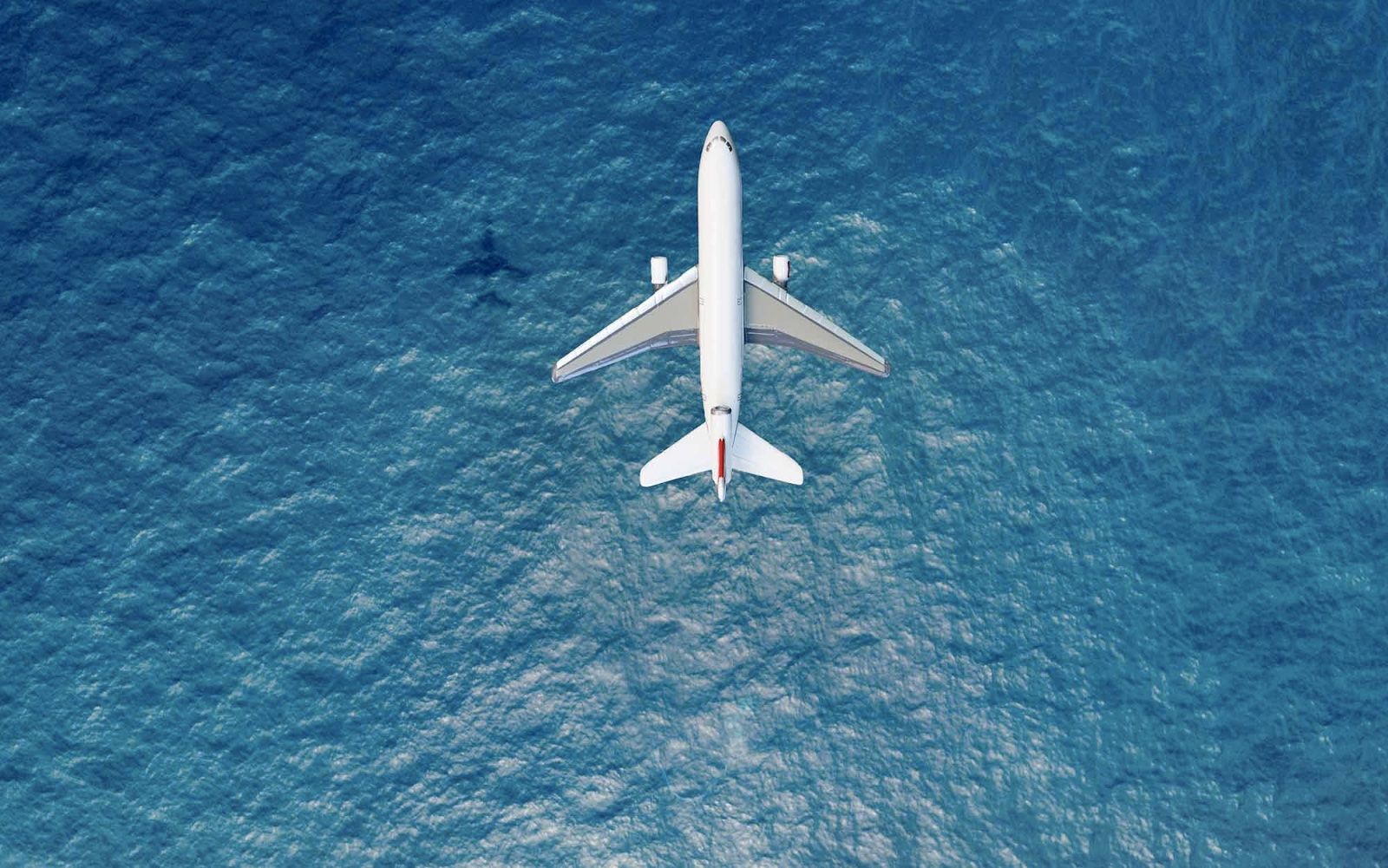Experiencing an injury during air travel can be distressing. Various accidents can occur on airplanes, ranging from turbulence-related incidents to slips and falls. Understanding the causes and types of these accidents is crucial for airline passengers.
That all raises the question — can you seek legal representation if you get injured or sick 38,000 feet up or afterward? This post will examine the question and when a personal injury attorney comes into the mix. This article will explore the types of accidents, their causes, and how to handle them. By understanding these scenarios and learning practical solutions, you can be better prepared to deal with any situation that arises.
Free Personal Injury Evaluation
Weren't at-fault for your accident? Click here to speak with a nearby attorney for FREE about your personal injury claim.
or call (888)-927-3080
Types and Causes of In-Flight Injuries
For all nervous flyers out there — flying is still the safest way to travel. Numbers prove it. Between 2017 and 2021, there were 36.6 million flights annually, on average. Among that number, there was an average of 44 accidents, with seven being fatal. To put it in further perspective, look at the number of people who flew just before the pandemic in 2019. That year, 4.7 billion people took a flight, yet there were 240 fatalities.
Lastly, flying is much safer than driving, and airplanes have countless safety features designed to protect passengers. Between 20 and 50 million drivers suffer injuries yearly from road accidents, while 1.3 million fatalities occur annually due to traffic accidents. Of course, air travel does get dangerous on extremely rare occasions. There are tragic stories, such as the fatal crashes of Lion Air Flight 610 and Ethiopian Airlines Flight 302. But there are yearly reports of injuries occurring mid-flight and illnesses that may come from flying itself.
Common Complaints and Lawsuits Against Airlines
Here are a few common injuries and ailments caused by injuries on airplanes and at airports.
- Musculoskeletal injuries — Sudden turbulence can do more than spill drinks. Not only are the bumps and drops of turbulence frightening, but severe turbulence can also lead to bruises, soft tissue damage, concussions, and broken bones. That usually happens if overhead luggage falls out, a stray food and drink cart hits a passenger, or a passenger gets ejected from their seat.
- Smoke inhalation and burns — These injuries rarely happen and typically occur during fires and crash landings. When they do occur, they can be severe and life-threatening.
- COVID-19 and other diseases — Infectious disease has always been a risk while flying, but the pandemic brought that risk to the forefront. Lockdowns, masks, and filtration systems significantly reduce the risk of catching COVID-19 on planes, but it is still present. Aside from pathogens, some people may get sick from other ailments aggravated by flying, such as deep vein thrombosis (DVT).
- Psychological trauma — Experiencing severe turbulence, an emergency landing, or some life-threatening situation while flying can induce life-long trauma for some flyers.
These can be caused by a number of different sources, but here are a few common airline accidents that can happen:
- Luggage Falling Out of Overhead Bins — Instances of luggage falling out of overhead bins during turbulence or due to improper storage can lead to injuries such as head trauma, bruises, and even broken bones.
- ‘Acts of God’ and Turbulence — Turbulence, often categorized as an “Act of God,” can cause injuries to passengers, including musculoskeletal injuries, as well as psychological trauma. It can also lead to items being dislodged and causing harm.
- Lost and Damaged Luggage — Airlines are responsible for handling passengers’ luggage properly. Instances of lost or damaged luggage can result in inconvenience and financial loss for passengers.
- Slipping & Falling at the Airport — Fall accidents at the airport due to wet floors, inadequate signage, or obstacles can result in injuries ranging from minor bruises to serious fractures.
- Injuries Caused By Rolling Food and Beverage Carts — Mishandling or improper securing of food and beverage carts can lead to accidents, causing injuries such as cuts, bruises, and even broken bones to passengers in their path.
Events such as brawls among irate passengers have become more common and can lead to injuries. They, too, are rare though.
Passenger vs Plane: Who’s Liable for What and When?
The general rule of thumb is this: if the airline was negligent, they are solely responsible for a passenger injury. If the passenger was negligent in some way, the airline maintains its innocence. But determining liability can get complex.
When it comes to personal injury law, there are instances where neither the airline nor the passenger is at fault, leading to a stalemate. The opposite is true as well. Some conditions are quite clear for a personal injury attorney to address.
Ignoring the Seat Belt Sign
If a passenger gets hurt during turbulence for not wearing their seat belt, it is solely the passenger’s fault. That’s especially true if the seat belt sign was on and the passenger ignored it.
Failure to Put on the Seat Belt Sign
If the pilot doesn’t turn the seat belt sign on for some reason, an injury due to turbulence may or may not be the airline’s liability. It’s hard to determine.
First, it’s doubtful a pilot wouldn’t turn the seat belt sign on if they knew turbulence from active weather was approaching. But if a pilot neglected to put the seatbelt sign on for some reason, knowing turbulence was ahead, they would be negligent.
With that said, planes do encounter what’s known as clear-air turbulence (CAT). That is sudden jolts and bumps, even if no clouds or storms are nearby. It’s challenging to predict clear-air turbulence, so if the plane jolts and the seat belt sign is off, it’s not the pilot’s fault. They, too, can be caught off guard just as passengers.
There are two notable cases where passengers filed lawsuits against airlines based on the claim they knowingly flew into turbulent skies. They involved a Singapore Airlines SQ308 from Singapore – London mid-2013 and a JetBlue Airways B6 429 from Boston to Sacramento on August 11, 2016. Both flights experienced significant turbulence and passenger injuries. They were unsuccessful. Pilots can encounter heavy turbulence even while trying to avoid bad weather, so there’s no negligence on their part.
Finally, many pilots now keep seat belt signs on for the entire flight, and flight attendants recommend it. These measures safeguard major airlines from liability.
Flight Attendants Moving Carts at the Wrong Time
Flight attendants should use food and drink carts during steady flight. At most, they can push a cart during minor turbulence. However, they MUST return food and drink carts to the kitchen once the seat belt sign comes on.
If for some reason a flight attendant ignored these warnings, a stray food cart leading to passenger injury would be an airline liability. Of course, these events are exceedingly rare. Also, a sudden jolt from unexpected turbulence leading to a food cart injury is not an airline liability.
Plane Crash or Emergency Landing That Causes Injury
Survivors of a plane crash or emergency landings can file a claim as long as negligence is to blame. In some cases, negligence is obvious. The tragic losses of Lion Air Flight 610 and Ethiopian Airlines Flight 302 are examples of this. Both flights were using Boeing 737 MAX planes, plagued by a design flaw Boeing ignored and kept secret.
Boeing was charged with criminal conspiracy and agreed to a $2.5 billion settlement, which included compensation for the victims’ families. Horrific instances like these are solely the airline’s responsibility. A personal injury attorney would help families receive compensation in such cases.
However, other cases are different. Consider, for example, the famous Miracle on the Hudson. Now considered a hero, retired pilot Capt. Chesley (“Sully”) Sullenberger III safely landed a U.S. Airways plane on the Hudson River in 2009. The emergency landing led to some injuries but, thankfully, no deaths.
The airline wasn’t negligent, though. A flock of geese flew into the engines (aka “bird strike”), leading to their failure and the emergency landing. Passengers couldn’t sue the airline for damages because of this, but they received $5000 in compensation for lost luggage.
Getting COVID-19 or Sick From Flying
Getting sick from COVID-19 while flying is unlikely to be the airline’s fault. They take many precautions to keep you safe in the first place, such as enforced mask use and having air filtration systems on their planes.
One could argue the airline would be responsible if a filtration system failed, leading to a COVID-19 infection. Of course, the likelihood of that happening is low since these systems undergo regular checks and maintenance.
Getting Help After an In-Flight Injury

If you suffer serious injuries while on an airplane, the first thing you should do is notify the flight crew and seek medical attention. The flight crew’s goal is to protect passengers, and they will either do what they can to render care or divert the flight to a nearby airport so you can seek emergency medical treatment. Here’s the information airline passengers need to know if they need to pursue damages after an airport injury.
1. Document Your Injury & Gather Witnesses
Whether you’re in an airport or on an airplane, gathering evidence of your injury and how it may have happened is essential for establishing proof of fault for a personal injury suit. Don’t wait until you’re off the flight to report the incident: let the flight attendant know, document your injury as well as the surrounding area, and make note of any potential causes. If there was a witness to the event, ask for their contact information so the court can get testimony from them at a later time.
Part of documenting your injury will include filing an incident report, which can be provided by airline employees. Be sure to complete it and ask for a copy for your own personal records.
After you’ve disembarked the plane, you should also speak to Customer Service and report the incident in writing to create a paper trail. You can do this in person at the airport, over the phone, by email, or through the airline’s website.
2. File a Claim With Your Travel Insurance Provider
If you have travel insurance, you have some financial protection from being injured at airports. Travel insurance should include medical expenses, in addition to covering other expenses involved in getting you home if you were injured on the flight. To make a claim on your travel insurance, follow these steps:
- Contact your insurer
- Provide documentation of your injury
- Complete all relevant claims forms
- Submit your claim
3. Examine the Airline’s Contract Of Carriage
If you don’t have travel insurance or if your insurance coverage is insufficient, you may be considering a personal injury lawsuit. If you are, one important step is to review the airline’s contract of carriage. A contract of carriage is a contract between a passenger and the carrier transporting them from one location to another. This contract will outline what the airport may be liable for and help you understand if an airline’s negligence is at play.
In addition, two laws have been put into place to outline the liability of airlines in cases of injury, death, or loss of personal property during a flight.
Warsaw Convention (1929)
Established less than 30 years after the invention of air travel, the Warsaw Convention was the first international treaty to establish best practices and rules for airlines in case of in-flight injury, crashes, death, or loss of luggage during international flights.
- Liability for lost luggage was capped at 250 gold francs per kilogram of checked baggage ($18.59 USD per pound).
- Liability for loss of life was capped at $125,000 gold francs ($20,721 USD).
Montreal Convention (1999)
The Montreal Convention made significant updates to the regulations posted in the Warsaw Convention, and not just to the 70-year-old payout maximums. Rather than set a hard number for the liability maximums, the Montreal Convention set the payouts based on Special Drawing Rights (SDRs), which is an international reserve asset that acts as a claim on the freely usable currencies of members of the IMF (International Money Fund).
The SDR limits for different types of claims are as follows:
| Article | Original SDR limits (1999) | December 2009 revised limits | December 2019 revised limits (SDRs) |
|---|---|---|---|
| Article 21 – Passenger bodily injury / death | 100,000 | 113,100 | 128,213 |
| Article 22 (1) – Passenger delay | 4,150 | 4,694 | 5,346 |
| Article 22 (2) – Baggage loss, damage or delay | 1,000 | 1,131 | 1,288 |
| Article 22 (3) – Cargo loss, damage or delay | 17/kg | 19/kg | 22/kg |
The Montreal Convention also establishes a system of strict liability where the airline is presumed liable unless proven otherwise.
5. Send a Demand Letter to the Airline
Before you go to court, you have the option of sending a demand letter to try to resolve a dispute in lieu of a lawsuit. These are typically sent in cases where someone owes money, and some types of cases even require you to craft and send a demand letter before you can file a lawsuit.
6. File Your Lawsuit in Court
Once you’ve filed your demand letter, you’ll be able to proceed to court if the demand letter did not help in resolving the situation.
However, going to court over an airline injury can present some unique challenges. The largest challenge is determining which court has jurisdiction over the injury claim, as multiple jurisdictions are often involved due to the number of states and countries often involved in air travel.
In most cases, passengers will file a claim in the country the airline is based in or where the flight took off, landed, or had a significant connection.
When and How Personal Injury Attorneys Can Help
Fortunately, the likelihood of encountering an aviation accident is slim. When accidents happen, they’re usually minor. Sadly, major crashes can happen.
When negligence leads to such events, a personal injury attorney can help victims get the compensation they deserve. That goes for both survivors of crashes and family members of deceased victims. The law will always side with the passenger when employees of an airline willingly jeopardize their safety.
Are you looking to speak with a personal injury attorney? Fill out this evaluation form so we can connect you with legal representation right away.
Shay Fleming is the SEO Content Manager at LeadingResponse, a prominent legal marketing company. A proud graduate of Texas State University, she has been based in Austin since 2016, where she lives with her dog. Shay has contributed extensively to various domains, writing and publishing articles about real estate, investing, disability, and urban living.


